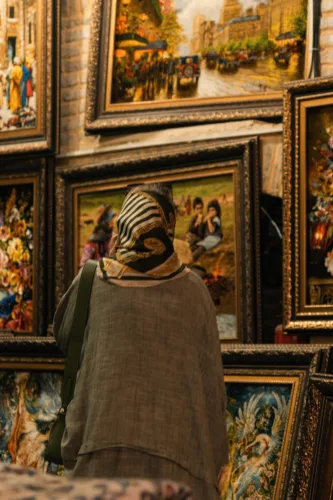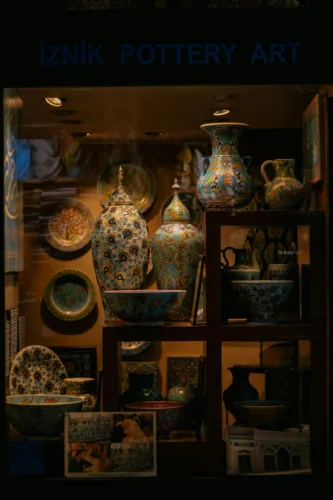Navigating the Challenges of Collecting. In the vast and diverse world of collecting, enthusiasts and professionals alike are confronted with a myriad of challenges that are as varied as the collections they amass. From issues related to authenticity and provenance to the complex dynamics of market trends and even to the logistical hurdles of storage and preservation, collecting isn’t merely about possessing. It’s a highly engaging journey requiring a mix of passion, knowledge, and vigilance. With an informed glance at history, an assessment of current patterns, and a projection onto future landscapes, this article provides an insightful exploration into the common difficulties collectors face while significantly underscoring the critical strategies to navigate them effectively.
Table of Contents
Navigating the Challenges of Collecting
Understanding the Passion of Collecting
Collecting, a hobby that spans across centuries and cultures, is the focused amassing of a particular variety of objects or items. Born from the human desire for ownership and completion, collecting adds an angle of education, preservation, and good old-fashioned fun to the equation of the human experience.
Defining ‘collecting’
Primarily, it is essential to understand collecting as an activity where enthusiasts or hobbyists locate, categorize, systematize, retain, and often exhibit items deemed interesting, valuable, or unique. Collecting is often seen as a personal pursuit, driven by unique interest, dedication, or historical attachment.
Types of collections and collectors
Collectors come in all shapes and sizes, with a myriad of interests. You have the philatelists, who collect stamps, numismatists specializing in coins, bibliophiles drawn to books, and even sneakerheads, who find joy in rolling in pairs of collectible shoes. Some other common collections include comic books, vinyl records, antiques, and art pieces.
The psychological drive behind collecting
Collecting usually serves as a means of satisfaction, a necessity for order, or a desire to retreat into a world of one’s own design. It satisfies the innate human instinct to hunt and gather, provides a sense of achievement, and imbues collectors with a unique identity.
The Challenge of Scarcity
Some challenges inherent in collecting center around the rare and elusive – items difficult to find and secure due to scarcity.
Understanding the concept of scarcity & rarity
In the world of collecting, scarcity and rarity refer to the limited availability of a particular item or object. The rarity of an item, often a direct result of its scarcity, can exponentially increase the significance and value associated with it.
How scarcity affects an item’s value
scarce or rare items garner higher value due to their decreased availability. The law of supply and demand, a fundamental economic principle, largely governs this phenomenon: when supply is low and demand is high, the price or value increases.
Ways to overcome scarcity challenges
One common way of overcoming the challenge of scarcity is through networking with other collectors, joining forums, and attending fairs and exhibitions. These practices can often lead to the discovery of coveted items.

This image is property of images.pexels.com.
Maintaining the Collection’s Condition
For collectors, preserving the state of their items is paramount. Wear and tear or damage can diminish the value and appeal of collectibles.
Importance of preserving an item’s condition
Preserving an item’s condition is crucial because it directly impacts the value and longevity of the item. For items with the potential to appreciate in value over time, maintaining their original state as much as possible can guarantee a fruitful return if ever resold.
Methods to maintain and restore items
Methods often involve careful handling, apt storage conditions, and, in some cases, the use of specialized cleaning or repair procedures. There are widely available professional services for restoration that collectors commonly utilize to prevent further damage and retain the value.
Challenges and solutions to maintaining item condition
Preservation challenges can include prolonged exposure to sunlight or moisture, improper handling, and insects or pests. Solutions could include humidity-controlled storage units, museum-quality display cases, proper insurance, and occasional professional conservation.
Dealing with Fake or Counterfeit Items
Difficult though it may be, collectors must also contend with the specter of counterfeiting.
Prevalence of counterfeit items in various collecting fields
One major barrier to all collectors, regardless of their field of interest, is the widespread presence of counterfeit items. Forgeries are becoming increasingly sophisticated, making authentication more difficult.
How to identify and avoid counterfeit items
Knowledge is power when it comes to spotting counterfeits. Familiarity with an item’s unique features, hallmarks, signatures, or expected wear and the use of authentication technology or services can help collectors identify fakes.
Tools and resources for ensuring item authenticity
Tools such as magnifying glasses and UV lights, combined with reference books, catalogues, or increasingly, smartphone apps, can verify authenticity. Additionally, consulting reputable experts or appraisers is always a safe bet.

This image is property of images.pexels.com.
Financial Challenges in Collecting
Collecting comes with its financial implications, as collecting rare and valuable items often entails significant monetary investment.
Cost of starting and maintaining a collection
The cost of creating and curating a collection largely depends on the items’ rarity and the collector’s dedication. This financial aspect often requires careful budgeting, planning, and considerable financial commitment.
Balancing value and passion in collecting
Striking a balance between the collection’s financial value and the collector’s passion for his objects can indeed be challenging. One solution is to focus on moderately priced items initially and gradually work towards the pricier collectibles.
Potential for financial loss in collecting
While collecting offers the potential for financial gain, there’s always the posibility of a loss. Not all collectibles appreciate in value over time, and market trends can fluctuate. As such, collectors should never view their collections as guaranteed investments.
Managing Space Constraints
Another hurdle collectors face is that of space constraints, as quick accumulation of items can lead to a lack of organizational and display space.
Understanding space implications of collecting
As a collection grows, so does the need for space to keep the items safe and properly displayed. This can pose a significant challenge, especially for collectors confined to smaller living spaces.
Creative solutions for displaying and storing collections
Collectors continuously devise creative solutions such as utilizing vertical wall space, multipurpose furniture, or digital storage for certain types of collections (like photographs or music) to combat space limitations.
When downsizing becomes necessary
When the collection overpowers the available space, downsizing often becomes necessary. Selective disposal, focusing on fewer categories, or temporary storage solutions can help control the size of the collection.

This image is property of images.pexels.com.
Keeping Up With Market Changes
The value of collectible items is subject to the changing dynamics of the market, underlining the importance of staying on top of these fluctuations.
How market trends affect collectible value
Market trends play a significant role in collectible value, with items gaining or losing value based on popularity, cultural significance, or economic conditions.
Importance of staying informed on market changes
Staying informed about market changes is vital in determining when to buy, sell, or hold an item in a collection. A well-informed collector can better navigate drastic market changes, affecting collectible value.
Helpful resources for understanding the collectibles market
Resources like collectible-focused magazines or websites, auction house records, and collector forums can provide valuable insight into existing market trends and potential future developments.
Coping with Emotional Attachment
Collecting often goes beyond simple possession and can lead to a significant emotional attachment.
Building emotional bonds with collectible items
A collector often forms emotional bonds with the items, primarily due to the time, effort, and resources spent to acquire and preserve them.
Challenges of letting go or selling collections
For collectors who have built strong emotional attachments to their items, selling or letting go can be a tough process, even when it’s economically or practically necessary.
Practical advice for maintaining emotional balance in collecting
Creating detachment, setting clear objectives, and regularly reviewing the collection’s purpose can help maintain an emotional balance, making it easier to let go of certain items if needed.

Navigating Legalities and Ethics of Collecting
Notably, collecting also requires an understanding of the related legalities and ethics.
Understanding laws related to collecting and reselling
Laws regarding collecting and reselling vary greatly and often depend on the type of items collected. For example, reselling antique items may come under scrutiny due to provenance laws.
Ethics of collecting historical or culturally significant items
Ethical concerns when collecting historical or culturally significant items are paramount. Such items often bear a heavy weight of cultural heritage and human history and should be preserved with utmost respect and care.
Potential legal issues and how to avoid them
Understanding the legalities of collecting, consulting with experts, and ensuring the items’ proper provenance can significantly mitigate potential legal headaches.
Planning for Long-Term Storage and Succession
Finally, planning for long-term storage and ensuring the collection’s proper succession is a vital aspect of collecting.
Importance of planning for long-term storage
Long-term storage planning ensures that collections are preserved in their prime condition, reflecting the time and effort invested in them. The right storage solution protects collectibles from environmental harm and aging.
Challenges of passing on collections
Passing on collections to another person or organization can pose many challenges, from finding a suitable recipient to preparing the items for transfer properly.
Tips for making a succession plan
Making a clear succession plan, including taking inventory, maintaining an up-to-date appraisal, and having open conversations with prospective recipients, can ease the handing over process.
Whether pursued as a hobby, investment, or passion, collecting is a journey filled with challenges. By understanding these hurdles, collectors can better navigate their course, ensuring the journey remains enjoyable and fulfilling in equal measure.

Related site – The Culture of Collecting

